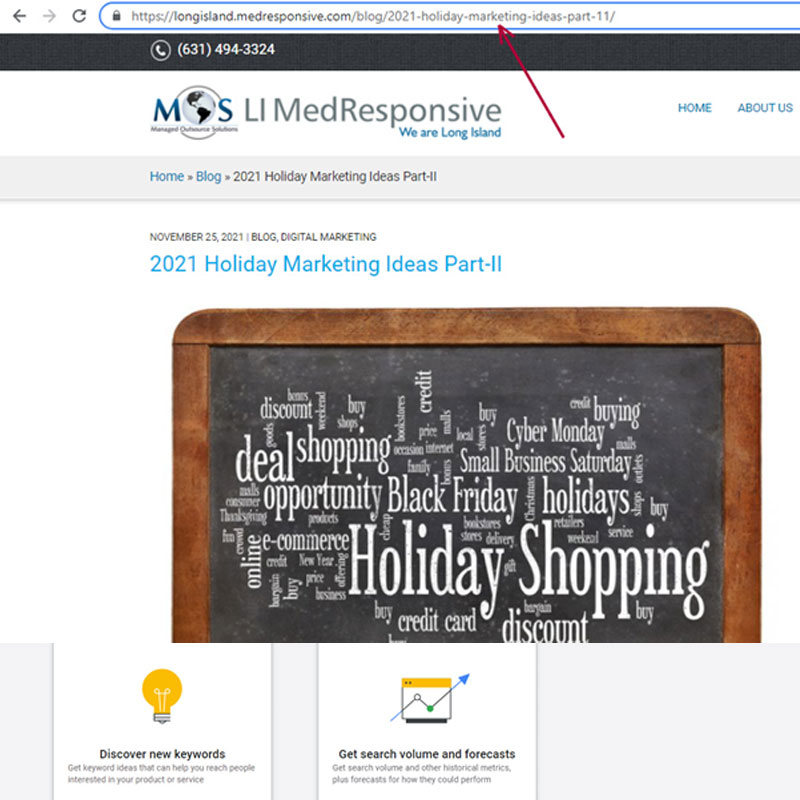As SEO outsourcing company, we know that optimizing a website is an essential criteria to improve its search engine result page ranking and attract more targeted traffic. Webmasters always keep an eye on SEO-related updates and modify their tactics or strategies accordingly to help businesses achieve higher search engine ranking. There are many key SEO tactics that can help with better ranking, visibility, conversion rate, improved sales and increasing revenue. Out of these, one practice that often gets overlooked is URL (Uniform Resource Locator) structuring. URL provides the location of the web page online. It acts as a link between your content and user.
Tips To Structure Your URLs for SEO
A good URL structure can provide a better user experience and improve page rank. Here are some tips on how to structure URLs.
- Use long tail keywords: Over 70 % of search queries are done using long tail keywords. Long tail keywords are natural and organic language that users commonly use. Shorter keywords often
have very high competition and they are hard to rank for with new content. But long tail keywords have a smaller potential audience, have no strong competition and get your audience’s attention more easily. To know which keywords are relevant to get more traffic, use tools like Google Keyword Planner. This will help you identify keywords that low competition but high traffic. Those keywords can be used in your content and URLs.
- Utilize HTTPS Protocol: HTTPS is the secure version of the HTTP protocol. It ensures that your website is safe, secure and credible. This also instils trust in users that encourages them to makes purchases and share their details such as credit card, personal information, etc. Today, around 69 percent of all websites currently redirect to HTTPS. Google is focused on promoting the adoption of HTTPS or SSL.
| Also read
Google’s Initiative, Move from HTTP to HTTPS – a More Secure Web |
-
- Edit page URL to make it relevant: All pages on your site should have a clear objective. So make sure to customize your website’s page URL to describe the content within the page. This will improve user experience and drive better click through rates.
- Separate words with hyphens: Don’t use underscores, spaces, or any other characters to separate words. SEO best practices use hyphens between words. This tells Google and users where the breaks between words are and they are much easier to read.
- Keep URLs short and simple: Most of the time, the page or post title is the default URL. Butsometimes the titles can be very long for the URL. It is best to keep the URLs short and concise as short URLs are likely to rank higher.
- Don’t use stop words: Never use stop words such as the, and, or, of, a, an, to, for, etc. in your URL. Eliminating such words can make your URL shorter and shorter URLs make them more readable which improves ranking.
- Use lowercase letters: URLs are case sensitive. Make sure to use lowercase letters for your URLs. If you used uppercase, then update your links and redirect to the new ones.
- Use meaningful keywords: Using one or two meaningful keywords that are relevant in URL tells Google what the page should show up for in search results. Remember not to stuff your URLs with keywords because it can come across as spam. It is best to use a keyword that is in the title and the post. You can also add these keywords into your page meta description because Google bolds these words in the search results. This helps your website to stand out in search results page.
- Redirect old URLs: It can happen that you make changes to your website over time and you may change your URL structure later for better usability. So if you wish to change your URL, it always recommended adding permanent redirects. Whenever you edit or change a URL, add 301 redirect so that when someone clicks the old URL it will redirect will automatically. But remember, having too many redirects can slow down your website. Stick to one or two redirects so that your website is not affected.
- Don’t use dates from blog posts: Make sure to remove post dates from the blog post URL so that the content remains relevant to searchers. URLs without dates can improve click-thru-rates and help content rank for years. If the post is related to a specific day or event, then you may add the post dates. But if you want your content to be evergreen, then go back and update high-performing posts with new content. Then re-publish the post with the current date in the URL. You can redirect the old post to the new post. Refreshing and republishing old content is a strong SEO strategy.
URLs are the building blocks of your website and following these steps can help structure your URLs correctly. Organic SEO services can help business optimize their URLs to perform better in search and appear more trustworthy.








